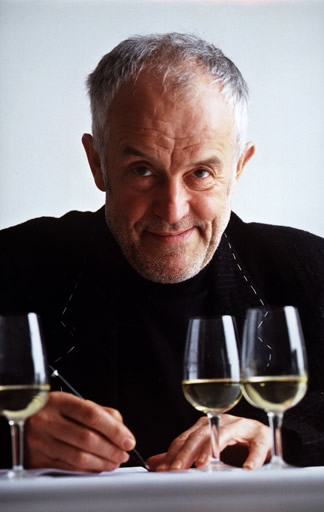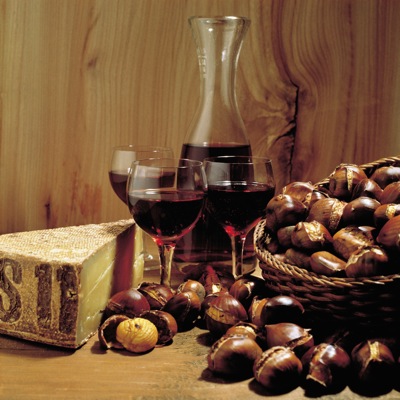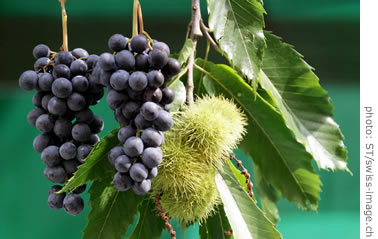EVERYTHING YOU EVER NEEDED TO KNOW ABOUT SWISS WINE (BUT DIDN’T KNOW TO ASK)

True, it hasn’t been breaking news lately, but Zurich based ad-guru and wine connoisseur, Ernst Meier, wants you to know that Swiss wine culture is alive and well.
“There has been a lot of progress in the last year in the wine culture, especially looking back to the indigenous grape varieties, which are the backbone of the quality labels in Switzerland.” You might not know this, but there are about forty varieties of indigenous grapes in Switzerland, all with an affinity for the climate, soil and weather conditions, some of them excellent matches:
“In the west and southwest you have Canton Vaud. This the second biggest growing area after the Valais. Both situated in the South West, they have one main grape variety, Chasselas, which produces the best wine on Lake Geneva. Dézaley is the best expression of this grape. Also, the rare and superb indigenous specialties found only in the Valais: Petite Arvine, Amigne, Humagne Blanche, Malvoisie (a Pinot gris), and Johannisberg (grape Sylvaner).”
And that’s just the tip of the berg (so to speak.)
So if Swiss vintage is so plentiful in variety, why is this central Europe’s best kept secret?
“Our production is very small. If you compare the total of hectares to France, we have sixty times less, and what we have too is a lot of small producers who have their clients, so they don’t have to put it on the market. They just sell to the restaurants and their private clients. So the wines are not on the market in European countries or the US. The wines are also relatively expensive when you compare them with wines from Italy’s south or Spain. Even neighboring Austria, who produces very nice whites and reds. Concerning Swiss wines: You can’t find them.”
Well, hardly. The other issue, Meier notes, is the problem of unifying all the wine producers under one banner.
“Its complicated. Switzerland has too complicated a political system to come together in a common way. Everyone is out looking for his own little vineyard.”
In the last five years there has been progress with uniting regional growers. And something else is happening. Similar to the enhancements Napa Valley went through with the rise of California nouvelle cuisine, Swiss restaurateurs and chefs are beginning to match regional foods with their corresponding wines.

Regional pairings: Swiss red, chestnuts with Valais mountan cheese; Raclette, a Swiss classic with a neighboring white...
“In Zurich there’s a restaurant called Alpenrose – there you can find some of the best wines in Switzerland produced in small quantities. There is also the new restaurant Terroir. They also sell Swiss wines from small producers”. This new self-confidence has created a dramatic increase in Swiss wine consumption. As Meier states, “Five years ago it was very difficult to find a good Swiss wine in a restaurant in Zurich. Everywhere you found Italian, French, Spanish wines–but not Swiss.” Swiss wines suffered from a poor self-image.
That image is vastly improving, thanks to a growing number of Zurich journalists and food critics. Meier cites at least three popular Sunday columns devoted often to the business of regional wine and cuisine. This points to a fundamental aspect of wine culture in Switzerland: wine consumption in Switzerland is always more or less centered around food.
“We don’t drink wine normally without food. We have our dinner, we have our lunch a glass or two of wine and that’s the culture. It’s similar to France.”
Meier personally favors French burgundies, but he will readily attest to Swiss contenders:
“Some of our Pinot Noirs are top. I would recommend the wines from the Bündner Herrschaft in the Grisons. There’s one producer doing super wines, Daniel Gantenbein who travels a lot to Burgundy and when you taste this wine you feel that influence.”
Speaking of vintners, Meier is very pleased to note a number of Swiss women wine growers:
“As in Napa valley, Swiss women are producing great wines in here. One is Irene Grünenfelder in the Bündner Herrschaft and she is also doing an excellent job. In the Valais we have Marie-Thérèse Chappaz and Fabienne Cottagnoud producing, among others, a wonderful range of dry to sweet whites from Petite Arvine or Marsanne called “Ermitage in the Valais”, as a reference to the great wines coming from the identical variety from the famous vineyards of Tain l’Hermitage facing the Rhône, in the south of Lyon.”
So that’s the backdrop. What else do you need to know? We’ll break it down categorically by region:
Six main Wine growing regions in Switzerland are: Valais, Vaud, Geneva, and the Three Lakes region in Western Switzerland; the German-speaking region of Eastern Switzerland; and the Italian-speaking Ticino in the South. Valais is the largest Swiss viticulture canton.
Eastern Switzerland
According to Meier, in the North East, the most important grape variety is Pinot Noir.
“You have a wonderful situation of slopes going down the Rhine border, where you have the Pinot Noir growing. There are still some other wines growing there, but the most important is the Pinot Noir.” Here it’s called Blauburgunder and this grape variety flourishes in Bündner Herrschaft in Canton Grisons, which is the upper Rhine Valley, south of Lake Constance. It is an alpine valley where a warm wind (called Föhn) blows quite often with a relatively hot and dry climate.
Around Zurich is a white grape variety called Müller-Thurgau and the Räuschling which is a very particular grape–a great refreshing wine to match with fish.
Western Switzerland (La Suisse-Romande, Valais)
As noted earlier, Canton Vaud in the southwest has one main grape variety, Chasselas, a white grape—used to create Dézaley. Recently international white varieties like Chardonnay, Sauvignon Blanc or Viognier have been planted. Reds are made from Gamay and Pinot noir.
In the Valais, the largest wine producing region, there are many varieties of whites: There is Fendant, which is similar to the Chasselas, as well as the rare indigenous super varieties like Petite Arvine, Amigne, Humagne Blanche, or other specialties like Malvoisie (a Pinot Gris) and Johannisberg (a Sylvaner). An absolutely delightful variety is the rare Heida, also called Rèze, identical with Savagnin Blanc ((Vin Jaune, Château Chalon)), the French part of the Jura hills. The Valais also boasts international varieties like Chardonnay, Sauvignon Blanc, Rhine Riesling, Muscat, Chenin Blanc and Dôle Blanche, which is a white/red specialty out of Gamay and Pinot Noir grapes.
In the Valais the majority of red wine is resulting from two varieties of reds: the Gamay and the Dôle (a Pinot-Noir/Gamay assemblage).
“Valais is home to two absolutely superb grapes, one is Cornalin, not found anywhere else, the other is Syrah which grows along the Rhone border. In the upper Rhone you can find this grape growing in almost the same conditions as France. So it brings very superb, interesting results.”
Also noteworthy is the esteemed (by conoisseurs) Humagne Rouge–which like Cornalin is an indigenous grape.
The Three Lakes region:
Lake Neuchatel, Lake Biel and Lake Murten comprise the “Three Lakes Region”. Between the Alps and the Jura you have the “Mitteland”. Nearer the Jura, the slopes from Geneva to Basel rise up to 1600 meters. On these lakes and their shores you can also find the Chasselas and the Pinot Noir, the main varieties as well as the same varieties growing in the southwest.
Ticino
Ticino is a very important region is in the South. Lugano boasts a (dormant) volcano and a main variety: Merlot. This particular Merlot is the alpine alternative to the great St. Emilions and Pomerols. According to Meier, in comparative tastings, the Merlots from Ticino were often better rated than those from the legendary Bordeaux.
“Normally, Merlots are not that interesting. There are not that many differences between an Italian Merlot or a Spanish Merlot or one from Napa valley. But this Merlot from Ticino is very distinct, very expressive,”
The situation in Ticino is specific: an alpine climate, mineral site, steep slopes, dodgy weather conditions— hot summers coupled with the enemies of viticulture, hail and rain… All in all, these factors add up to a very interesting spicy note.
Like we said, Swiss wines are difficult to come by—but not impossible!
Should you find yourself in Zurich, visit the specialty restaurants, such as Terroir or Alpenrose:
http://www.restaurant-alpenrose.ch/
http://www.terroir.ch/
Some useful links if you wish to go on a Swiss Wine Safari:
http://www.swisswine.ch/
http://switzerland.isyours.com/e/guide/basics/swiss.wine.html
http://www.vinum.info/ch/gps.jsp
http://www.epicurean-traveler.com/SwissWines.htm
http://www.myswitzerland.com/en.cfm/about_switzerland/food_and_wine/
Only one percent of Swiss wines are available for export. Your best bet of procuring Swiss vintage outside of Switzerland are these specialty sites:
http://winefetch.com
http://www.wine-searcher.com/merchants/usa
http://www.swisscellars.com/portfolio.htm#Swiss_Wines
http://www.nickdobsonwines.co.uk/acatalog/Swiss_Wines.html
Now you know, don’t forget to sniff the bouquets…




